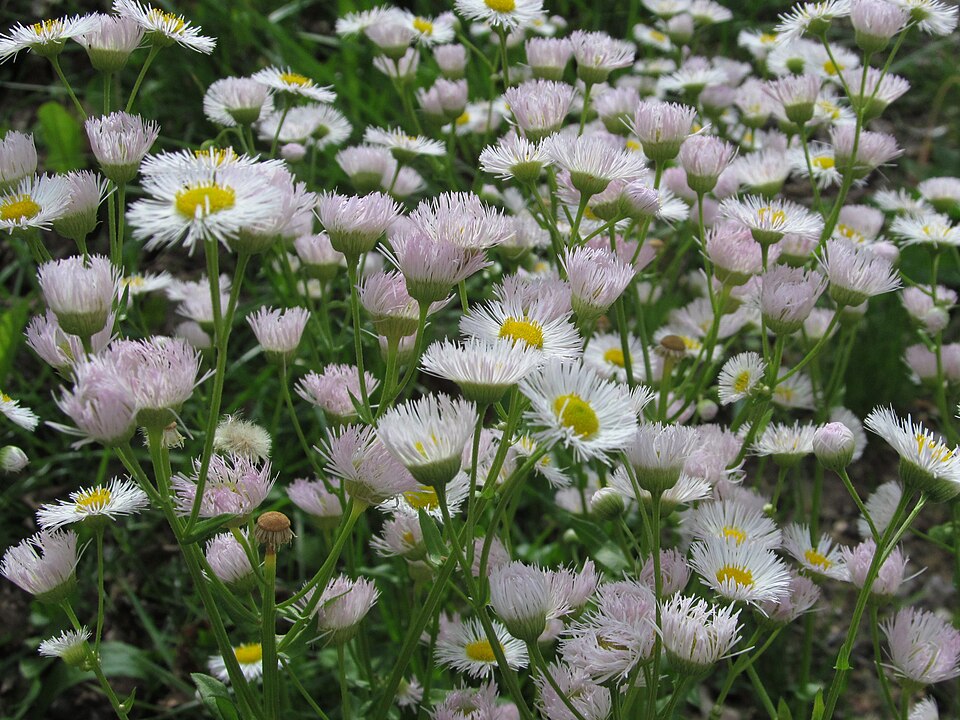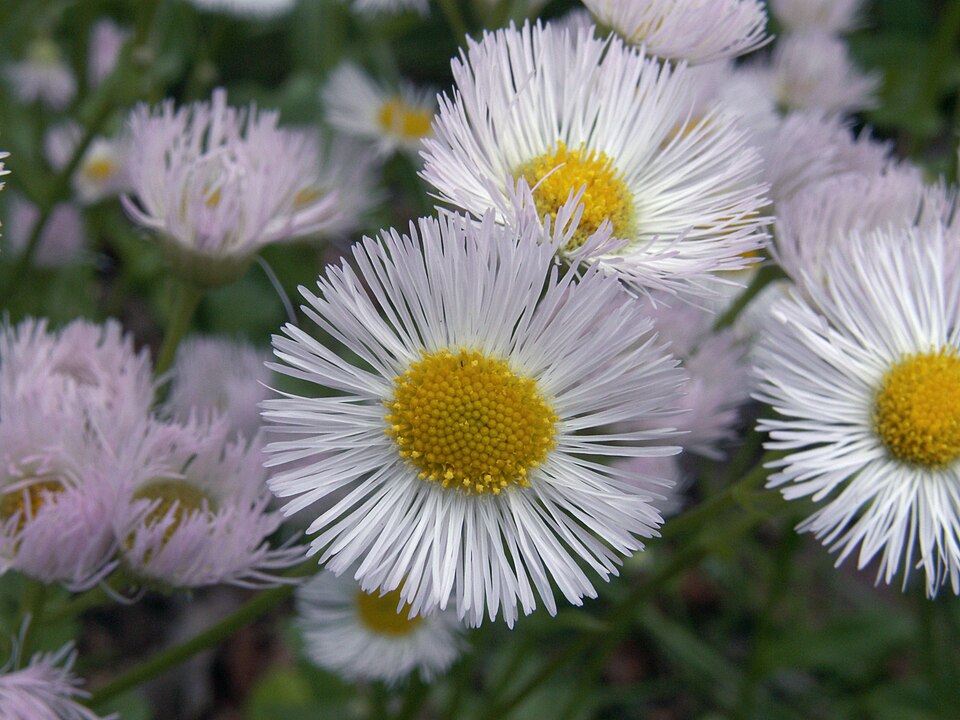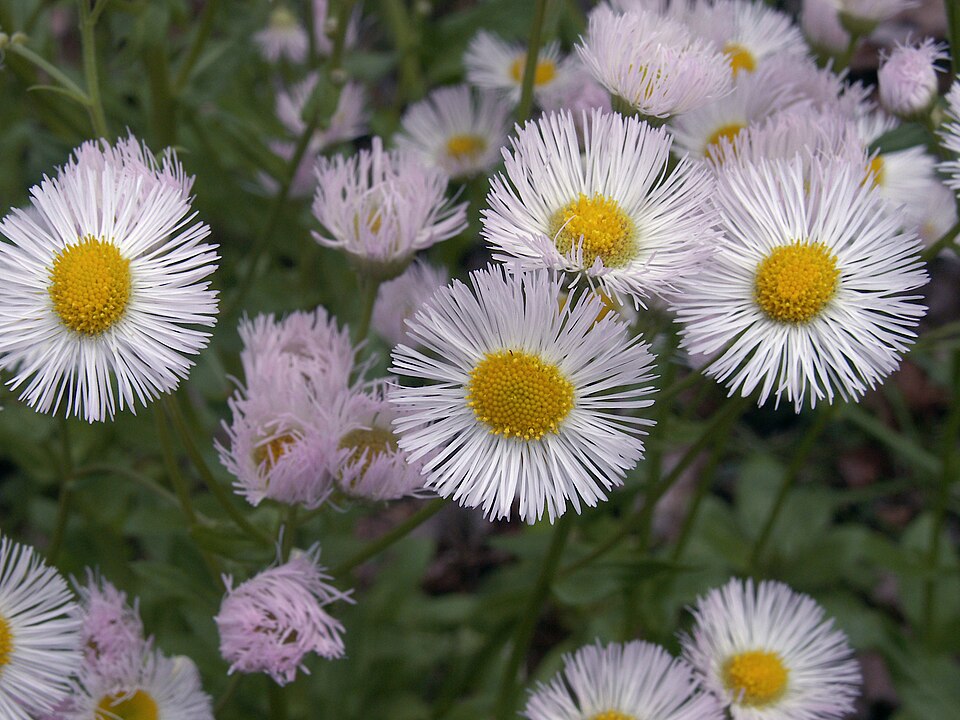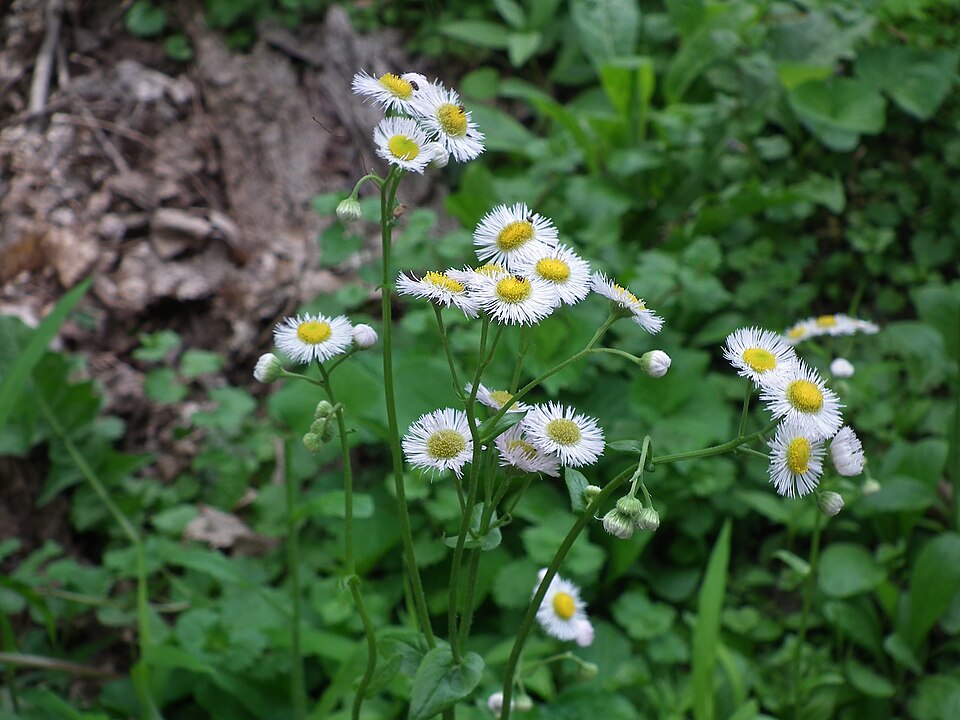
Philadelphia Fleabane is found in many of the same places as Common or Daisy Fleabane (Erigeron annuus), and the two can be hard to tell apart at first glance. Philadelphia Fleabane has even more rays—usually more than a hundred per flower head—giving the heads a shaggy appearance. As we see above, Philadelphia Fleabane is also more likely to show a pink tinge or occasionally a strong pink color, but that is not a reliable indicator, since many Philadelphia Fleabanes are pure white. These plants were growing in a large patch along a street in Beechview.

This common weed can tolerate some shade, so we often see large patches of it in lightly shaded overgrown areas near parking lots or roads.

For a description of the species, see the Erigeron philadelphicus reference page

In the picture above, note how the heads in bud are nodding—hanging down—before they open.
Comments















